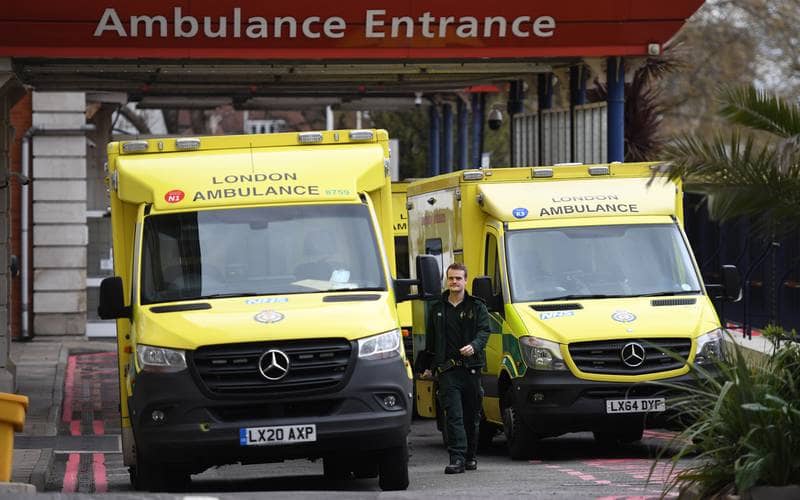Covid-19 linked to increased risk of serious blood clots for up to six months

People who have had Covid-19 are at increased risk of serious blood clots for up to six months, a study claims. Researchers found the risk of deep vein thrombosis (DVT) was “significantly increased” for three months after Covid-19 infection, six months for pulmonary embolism, or blocked blood vessel in the lungs, and two months for bleeding.
The findings show people with underlying health problems are most at risk, as are those with more severe Covid-19. Risks were higher during the first wave of the pandemic compared to the second and third waves. Researchers said this could reflect the role of vaccines and treatments, particularly for older people, in cutting their chances of suffering complications.Read More : UK Covid deaths could rise as infections continue to increase, experts warn The team of experts behind the study, published in the British Medical Journal, also said the findings were important for offering some patients drugs to prevent clots. For the research, experts from Umea University in Sweden looked at data for more than a million people in the country who tested positive between February 2020 and May 2021.
They were compared to more than four million people without the virus. The team also looked at the risk of clots in the period after Covid symptoms began, compared to long before people tested positive, and long after their symptoms disappeared.
The results showed a five-fold increase in risk of deep vein thrombosis, a 33-fold increase in risk of pulmonary embolism, and an almost double increase in risk of bleeding in the 30 days after infection. In absolute terms, this means a first DVT occurred in 401 patients with Covid-19 (absolute risk 0.04 per cent) and 267 patients without (absolute risk 0.01 per cent) over this period.
Meanwhile, a first pulmonary embolism occurred in 1,761 patients with Covid (absolute risk 0.17 per cent) and 171 without (absolute risk 0.004 per cent).
A first bleed occurred in 1,002 patients with Covid (absolute risk 0.10 per cent) and 1,292 without (absolute risk 0.04 per cent). Risks continued for most patients for up to a period of six months.
The team concluded: “Our findings arguably support thromboprophylaxis [preventative treatment] to avoid thrombotic events, especially for high risk patients, and strengthen the importance of vaccination against Covid-19.”
UK experts said rising numbers of coronavirus infections could see an increase in death and hospital admissions. Covid rates in England are the highest they have ever been, and the two variants of Omicron – BA.1 and BA.2 – have caused peaks in the pandemic – one in January and another in March.
The number of people with Covid-19 in hospital in the UK has also climbed to its highest level for more than 13 months. A total of 20,398 patients were in hospital on Monday, government figures show. Just over half (56 per cent) are being treated primarily for something else rather than coronavirus, up from about a quarter in the summer and autumn of last year.
The findings show people with underlying health problems are most at risk, as are those with more severe Covid-19. Risks were higher during the first wave of the pandemic compared to the second and third waves. Researchers said this could reflect the role of vaccines and treatments, particularly for older people, in cutting their chances of suffering complications.
They were compared to more than four million people without the virus. The team also looked at the risk of clots in the period after Covid symptoms began, compared to long before people tested positive, and long after their symptoms disappeared.
The results showed a five-fold increase in risk of deep vein thrombosis, a 33-fold increase in risk of pulmonary embolism, and an almost double increase in risk of bleeding in the 30 days after infection. In absolute terms, this means a first DVT occurred in 401 patients with Covid-19 (absolute risk 0.04 per cent) and 267 patients without (absolute risk 0.01 per cent) over this period.
Meanwhile, a first pulmonary embolism occurred in 1,761 patients with Covid (absolute risk 0.17 per cent) and 171 without (absolute risk 0.004 per cent).
A first bleed occurred in 1,002 patients with Covid (absolute risk 0.10 per cent) and 1,292 without (absolute risk 0.04 per cent). Risks continued for most patients for up to a period of six months.
The team concluded: “Our findings arguably support thromboprophylaxis [preventative treatment] to avoid thrombotic events, especially for high risk patients, and strengthen the importance of vaccination against Covid-19.”
UK experts said rising numbers of coronavirus infections could see an increase in death and hospital admissions. Covid rates in England are the highest they have ever been, and the two variants of Omicron – BA.1 and BA.2 – have caused peaks in the pandemic – one in January and another in March.
The number of people with Covid-19 in hospital in the UK has also climbed to its highest level for more than 13 months. A total of 20,398 patients were in hospital on Monday, government figures show. Just over half (56 per cent) are being treated primarily for something else rather than coronavirus, up from about a quarter in the summer and autumn of last year.
Source: www.thenationalnews.com
